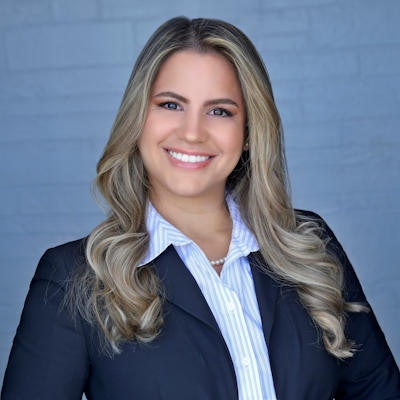
Code what you do is the rule. But first, you must know whether what you think you are coding is actually what was performed on the patient, particularly when it comes to inlays, onlays, and three-quarter crowns.
Many insurance coordinators will see a code for a procedure on a treatment plan but little documentation that supports the clinical choice. If it isn't in the notes, it didn't happen.
 Estela Vargas.
Estela Vargas.Before you consider coding for reimbursement from insurance plans for inlays, onlays, and three-quarter crowns, you must know how they are defined in the ADA's CDT 2022 Current Dental Terminology book. Consult the CDT manual for the codes and their descriptors and nomenclature and then meet with the clinical team to ensure proper notes are included in the patients' charts.
Insurance considerations for indirect restorations
Inlays, onlays, and three-quarter crowns are defined as indirect restorations because they are fabricated outside of the mouth using physical or digital impressions. The remaining healthy tooth structure is a determining factor in the restoration choice.
Here are some important considerations for the three types of restorations:
- Inlays: If all the cusps are intact, many dentists choose an inlay when it is more appropriate than a filling. The benefit of a dental inlay is to conserve more of the tooth's structure. In addition, not as much drilling is required to prep the tooth, and inlays can help increase tooth strength by 50%. Inlays repair small fissures, and they secure the structural integrity of a tooth.
- Onlays: An onlay will cover one or more missing cusps, and this detail must be in the insurance narrative. Many plans require that two or more cusps of a tooth be involved to do an onlay, and they may specify how much of the cusp incline must be involved. It's usually 80% or more to qualify for benefits.
- Three-quarter crowns: Three-quarter crowns cover all of the cusps on posterior teeth, they extend beyond the height of contour on the covered surfaces, and they restore three of the four proximal surfaces.
Many preferred provider organization (PPO) plans have an alternate benefit clause for direct restorations if proof has not been presented for indirect restorations. Some PPO plans have a least expensive alternative treatment (LEAT) clause which dictates that only the cheapest alternative treatment will be paid. The cheapest material is often amalgam, and other plans exclude inlays as a covered benefit even if inlays are warranted by the clinical notes.
While the restoration value is there for an inlay, usually patients don't want amalgam because it is unsightly and contains silver, tin, copper metals, and mercury. However, when the patient learns that their plan benefits will not cover an inlay, they often choose the least expensive alternative, amalgam.
Further, often the plan policy dictates that 50% or more of the tooth structure must be missing before an indirect restoration is adjudicated for payment. The patient who only wants what the insurance will pay often gets an extensive filling or an interim restoration with a guarded long-term prognosis due to the chewing forces of the posterior molars.
Of course, it isn't fair that the insurance plan won't pay when you have provided what you feel is the best restoration for the patient. When the contract says "not a covered benefit," it doesn't matter.
8 ways to increase your odds of getting paid
What can you do to increase your odds of getting paid? Follow these tips:
- Verify insurance coverage. Complete insurance verification for each patient before the patient arrives for an appointment. Acquire benefits by website, email, fax, or phone. A phone call is often necessary to get the finer details of the benefits, such as the history of x-rays, crowns, bridges, implants, periodontal services, age limitations, and frequency limitations.
- Get a preestimate. Send in a predetermination (preestimate) of dental benefits, especially if the plan administrator requires it or the patient requests it. Some plans require a preestimate for services totaling more than $300. The predetermination request should contain a narrative explaining why an inlay or onlay is the best treatment, and it should contain an attachment of pertinent documentation.
- Check frequency limitations. Most insurance plans have frequency limitations on all restorations. Some have 10-year or longer limits for onlays, inlays, and crowns. The insurance company will ask for information on the previous restoration, type, and placement age.
- Don't bill for buildups. Core buildups are never paid when billed with an inlay or an onlay because, by descriptor, there is sufficient tooth structure to support the restoration. If you report a buildup or resin composite on the same tooth at the same visit, the insurance plan will deny it.
- Submit a clear narrative. It's helpful to submit a clear, written narrative explaining the number of cusps and surfaces replaced and the long-term prognosis. If the existing restoration has been damaged by trauma, there may be benefits not subject to the frequency limitation.
- Note replacement restorations. Use the clinical notes to provide the previous seat date and reason for replacement restorations.
- Provide evidence. Providing diagnostic quality x-rays both pre and post-treatment, the narrative, recent periodontal charting, and photographs will alleviate the need to submit additional information.
- Don't double code. It is not correct to report an inlay code and an onlay code on the same tooth. The onlay code is inclusive of the inlay.
Summary
To receive reimbursement for the services you provide to patients with insurance plans, the entire team -- clinical and administration -- should know the difference between an inlay, an onlay, and a three-quarter crown.
Patients will gain trust when they are given knowledgeable answers to questions regarding these restorations. Excellent, detailed clinical notes help create narratives for insurance plans and create a solid, credible dental history.
Estela Vargas, CRDH, is the founder and CEO of Remote Sourcing, a dental insurance billing and revenue recovery service. She is a graduate of Miami Dade College's dental hygiene program. Vargas' extensive background in the clinical arena of dentistry is coupled with her experience as a practice administrator and business executive.
The comments and observations expressed herein do not necessarily reflect the opinions of DrBicuspid.com, nor should they be construed as an endorsement or admonishment of any particular idea, vendor, or organization.



















